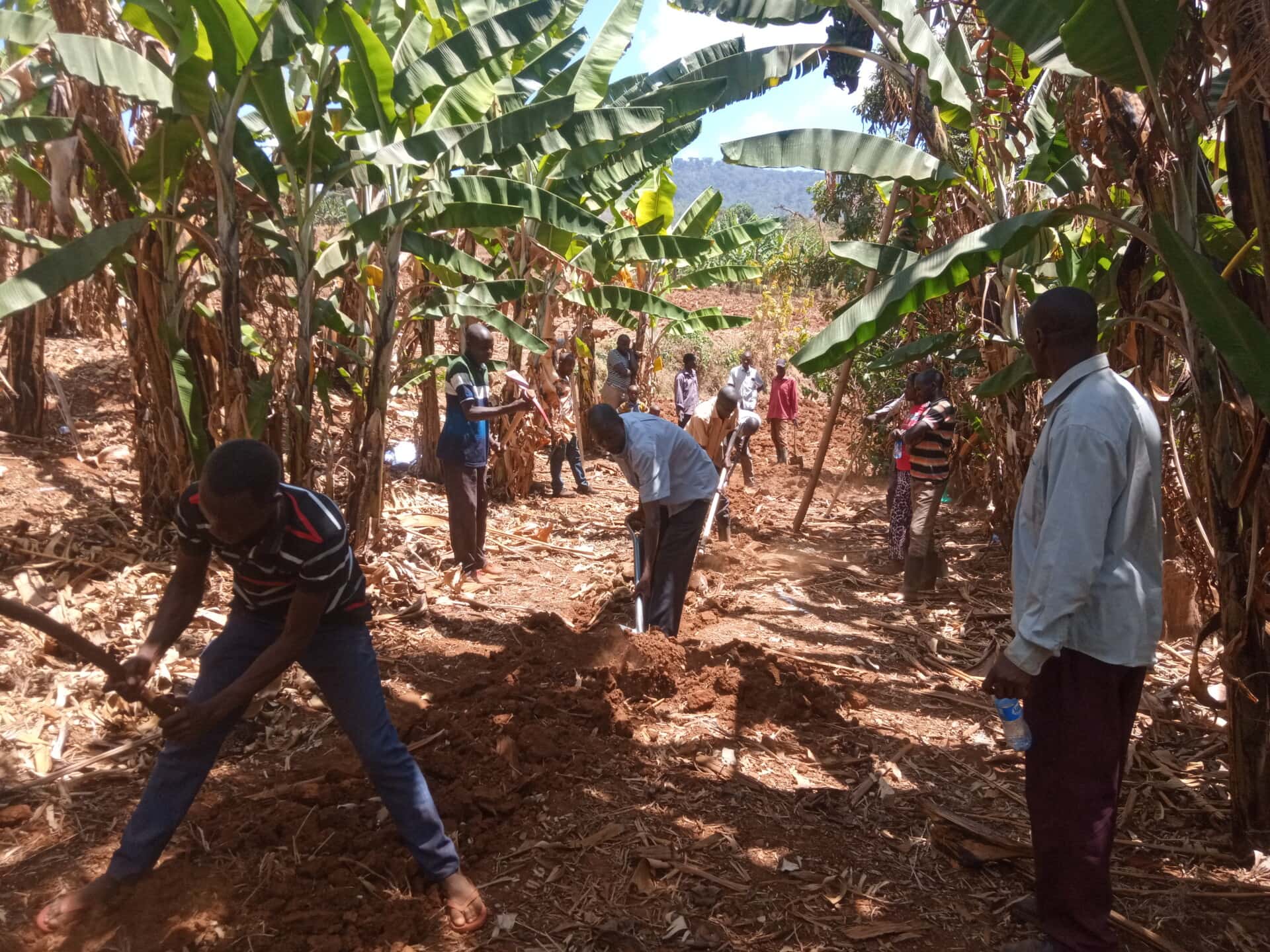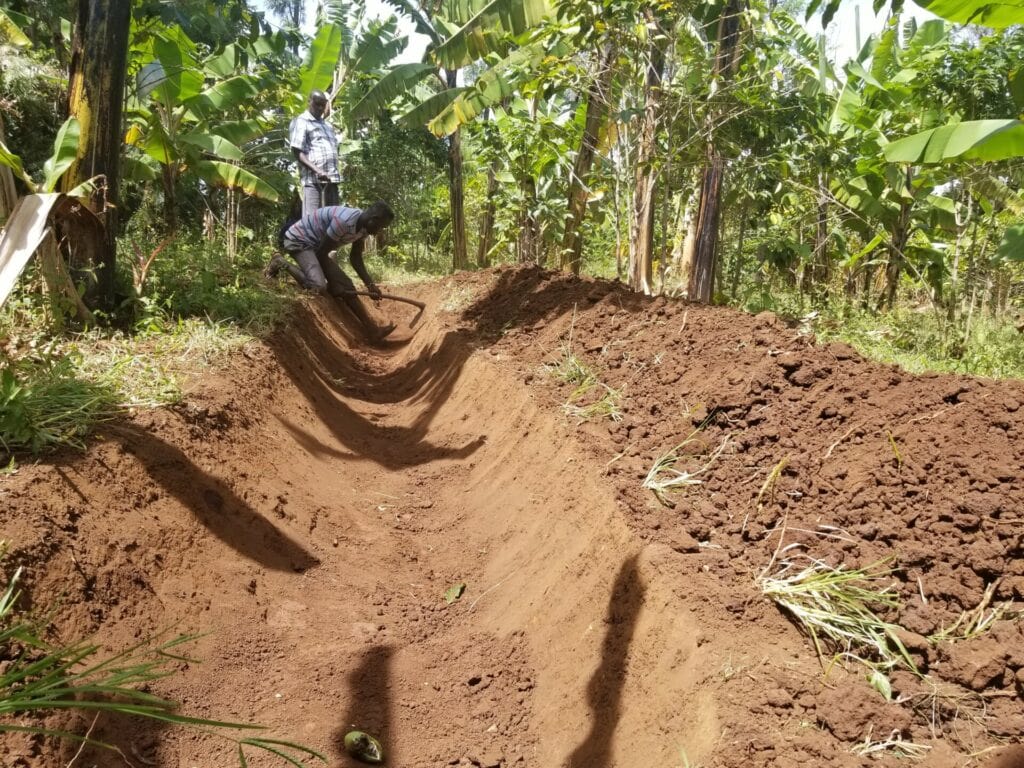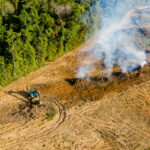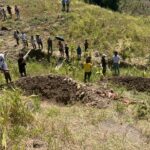Rainwater harvesting helps address soil erosion, soil fertility, and moisture loss

Our team in Uganda shares how rainwater harvesting has been beneficial for farmers in project communities
The in-situ rainwater harvesting technologies consist of making storage available in areas where the water is going to be utilized. Kapchorwa, Kween, and Bukwo lie along the slopes of Mt. Elgon. The area is naturally hilly, and farmers are engaging in agriculture on these steep slopes without putting much consideration into soil and water conservation practices. This has led to massive soil erosion, soil fertility, and moisture loss.
Through the Green Future Farming project, many in-situ rainwater harvesting training and workshops have been organized for the farmers. The goal is to equip them with the knowledge and skills to put up soil and water conservation technologies. The in-situ technologies promoted within the project are infiltration pits, trenches, and stone and soil bunds.
The project has also put up more hybrid technologies to restore the degraded and gullied landscapes. Putting up loose boulders and gabion check dams are some ways to conserve soil and water. These technologies were piloted in the Kaplelko landscape with plans of scaling them up to other areas.
With the construction of the above interventions, farmers have reported cases of minimum erosion in their farms, more water retained, and enhanced soil moisture, hence the crops are able to withstand short droughts.
However, the project has registered low rates of adoption among other farmers. There is an opportunity for more follow-ups. The team is hopeful that in the next phase of the GFF, fueled by more engagements and follow-ups, more farmers will put up these soil and water conservation technologies in their farms thereby reducing the problem of soil erosion and other landscape related issues.




